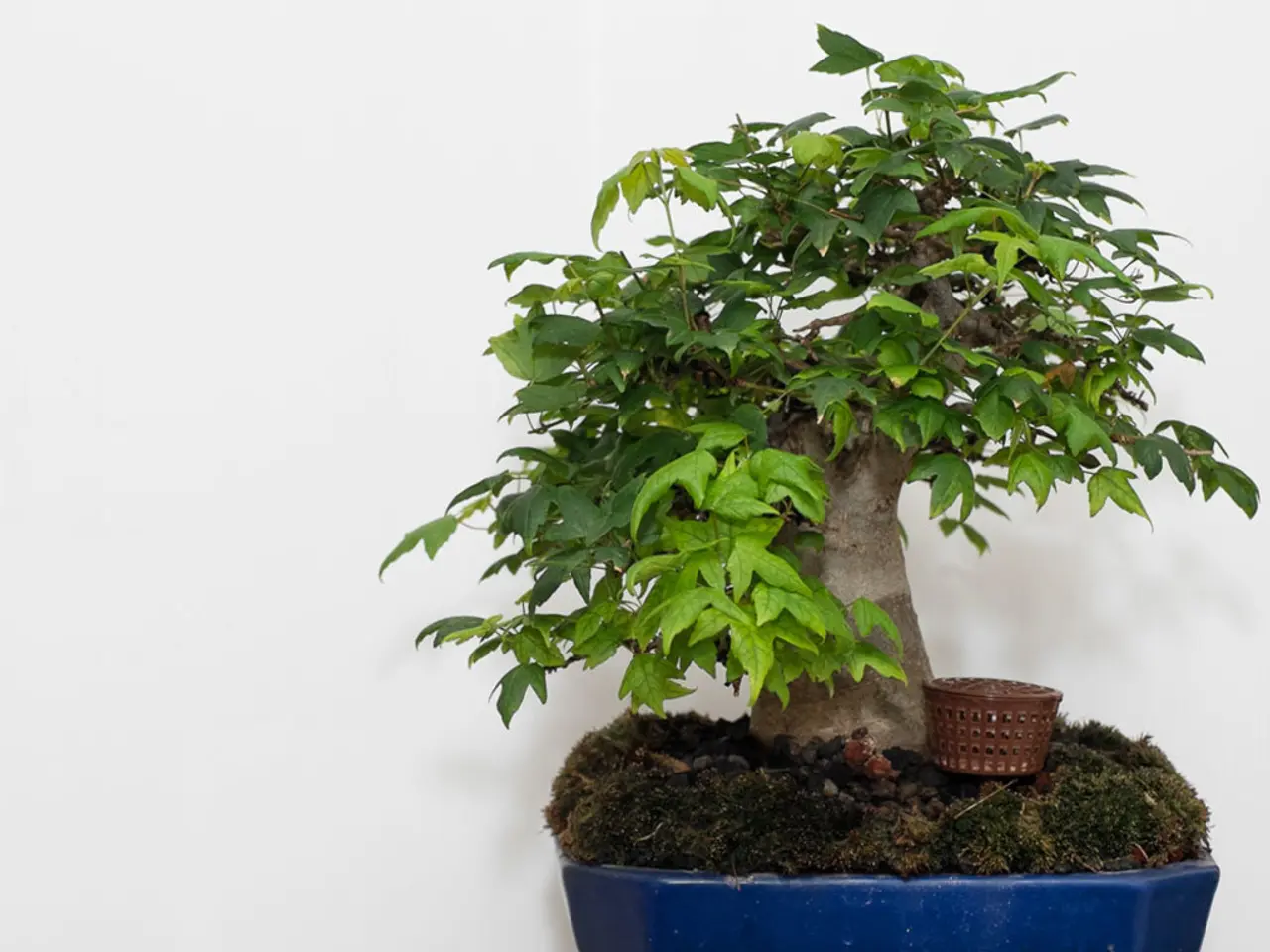Essential Facts for Bonsai Beginners: Important Points to Ponder Before You Start Your Journey
For those new to the world of bonsai, choosing the right tree species can make all the difference. Here are some recommended beginner-friendly bonsai species, chosen for their ease of care, adaptability, and forgiving nature.
| Bonsai Species | Why Suitable for Beginners | Key Characteristics | |-------------------------|-------------------------------------------------------|-----------------------------------------------------------| | **Juniper (Juniperus spp.)** | A classic bonsai choice, hardy outdoors, easy to shape | Needle-like foliage, strong trunk lines, great outdoor bonsai | | **Japanese Maple (Acer palmatum)** | Known for beautiful seasonal color changes and moderate care | Stunning fall colors, sensitive to extreme weather, outdoor use | | **Trident Maple (Acer buergerianum)** | Fast-growing and easy to shape with a strong branch structure | Triple-lobed leaves, excellent for root-over-rock style | | **Hawaiian Umbrella Tree (Schefflera arboricola)** | Ideal for low-light indoor environments due to its low maintenance | Tropical feel, thrives in indoor environments | | **Fukien Tea (Carmona retusa)** | Slightly more care needed but great for intermediate beginners | Glossy leaves, tiny flowers, natural bonsai look | | **Ginseng Ficus (Ficus retusa, Ficus microcarpa)** | Highly resilient and adaptable, perfect for indoor bonsai | Thick trunk, aerial roots, vibrant foliage, easy care | | **Dwarf Jade (Portulacaria afra)** | Very forgiving, drought tolerant, grows thick trunk over time | Succulent leaves, dense canopy, excellent for indoor bonsai | | **Chinese Elm (Zelkova)** | Hardy and forgiving as an indoor bonsai | Adaptable, charming appearance, great for beginners | | **Podocarpus (Buddhist Pine)** | More forgiving than true conifers, versatile indoor/outdoor | Dark green needle-like leaves, reddish bark, easy shaping |
**Why these species are suitable for beginners:**
- **Ease of care and resilience:** Many of these trees, such as Ginseng Ficus, Juniper, and Chinese Elm, tolerate beginner mistakes better, such as irregular watering or less precise pruning. - **Adaptability:** Indoor-friendly bonsai like Hawaiian Umbrella Tree, Ginseng Ficus, and Dwarf Jade allow beginners to grow bonsai inside where conditions are easier to control. - **Growth and shaping:** Species such as Trident Maple and Juniper grow quickly and respond well to shaping techniques, helping beginners see progress and learn styling. - **Aesthetic appeal:** Trees like Japanese Maple and Fukien Tea offer seasonal interest or flowers, keeping beginners motivated by their beauty.
In addition to choosing the right species, bonsai cultivation requires careful consideration of environmental factors, soil composition, and responsible practices. Understanding the natural growth habits and requirements of the chosen species is crucial for providing optimal care. Climate and environmental factors, such as temperature, humidity, light, and wind, significantly impact bonsai tree growth and development.
Drainage is important to prevent root rot, and a mix with good drainage properties ensures excess water is removed. A well-balanced soil composition that provides necessary nutrients, water, and aeration is essential for bonsai tree health. Aeration is necessary for roots to absorb oxygen and promote healthy growth and development. Regular repotting is essential for bonsai trees every 2-5 years to replenish soil nutrients, prune roots, and accommodate growth.
Starting with a sapling or young tree can be more practical for shaping and training a bonsai tree compared to starting from a seed. Mastering fundamental tools and techniques is essential for shaping and maintaining the desired form and health of miniature trees. Essential tools for bonsai cultivation include concave cutters, wire cutters, root hooks, and wire.
Caring for a bonsai tree demands a significant time commitment. Bonsai education and learning are crucial components of this art form, and attending workshops and seeking guidance from experienced bonsai artists can help improve skills. Responsible sourcing of bonsai material is crucial to preserve natural resources and the environment.
The process of cultivating bonsai fosters a profound connection with nature. The case of Hiroshi, a Japanese bonsai master, illustrates the long-term harmony between human and nature in bonsai cultivation. Bonsai clubs and online forums offer resources for learning about sustainable practices.
[1] Bonsai Empire (2021). The Best Bonsai Trees for Beginners. [online] Available at: https://www.bonsaiempire.com/academy/best-bonsai-trees-for-beginners [Accessed 10 Mar. 2023].
[2] Bonsai Tonight (2021). Best Bonsai Trees for Beginners. [online] Available at: https://bonsaitonight.com/best-bonsai-trees-for-beginners/ [Accessed 10 Mar. 2023].
[3] Bonsai4me (2021). Best Bonsai Trees for Beginners. [online] Available at: https://www.bonsai4me.com/best-bonsai-trees-for-beginners/ [Accessed 10 Mar. 2023].
[4] Bonsai Empire (2021). The Best Bonsai Trees for Indoors. [online] Available at: https://www.bonsaiempire.com/academy/best-bonsai-trees-for-indoors/ [Accessed 10 Mar. 2023].
[5] Bonsai Tonight (2021). The Best Bonsai Trees for Indoors. [online] Available at: https://bonsaitonight.com/best-bonsai-trees-for-indoors/ [Accessed 10 Mar. 2023].
Home-and-garden enthusiasts can explore the world of bonsai by cultivating beginner-friendly species such as the Juniper, Japanese Maple, Trident Maple, Hawaiian Umbrella Tree, Fukien Tea, Ginseng Ficus, Dwarf Jade, Chinese Elm, Podocarpus, and Buddhist Pine. These trees are suitable for beginners due to their ease of care, adaptability, and forgiving nature.
To ensure the health and growth of your prized bonsai, pay close attention to factors like climate, environmental conditions, soil composition, and drainage. Nurturing your tree with care and patience will help it flourish and bring some serenity to your lifestyle.







